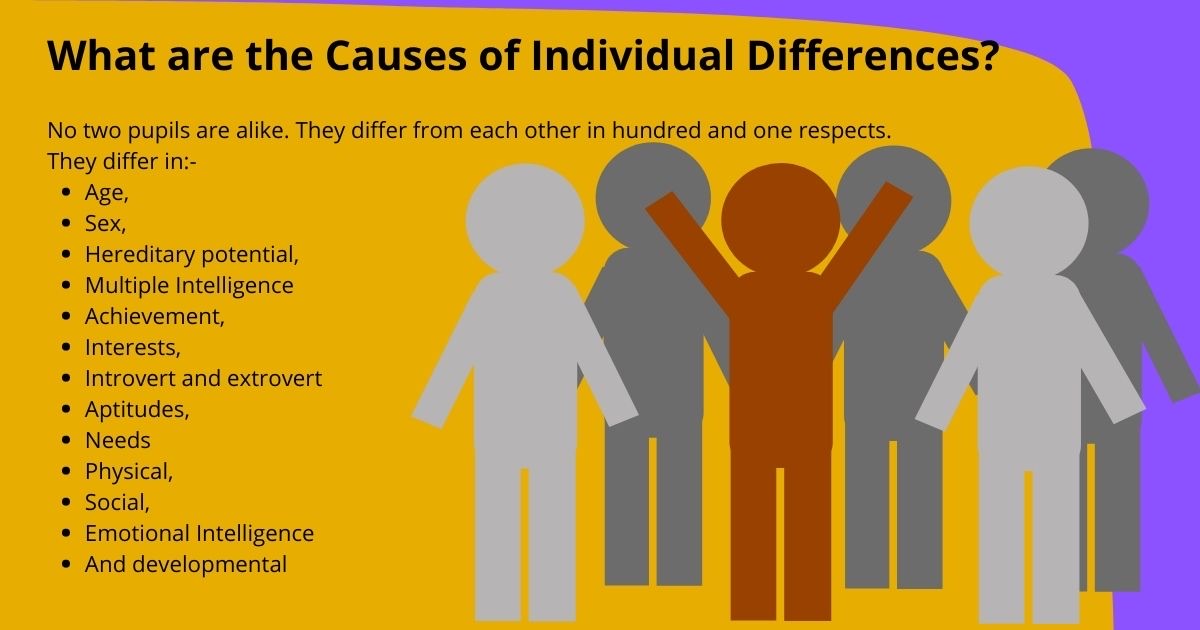What are the Causes of Individual Differences
by Yuvi - November 14, 2020
What are the Causes of Individual Differences?
No two pupils are alike. They differ from each other in hundred and one respects.
They differ in:-
- Age,
- Sex,
- Hereditary potential,
- Multiple Intelligence
- Achievement,
- Interests,
- Introvert and extrovert
- Aptitudes,
- Needs
- Physical,
- Social,
- Emotional Intelligence
- And developmental
If there are forty pupils in a class there are forty problems to solve, if the teacher wants to be effective.
For example, one child may listen to the teacher’s words of advice, the other may not be at all hearing them: one may foe a hard worker, the other may be lazy and lethargic one may do the home work quickly, the other may not submit it even after repeated warnings one may be intelligent, the other may be mentally retarded.
The causes of individual differences are:
1. Difference in Growth Rate
Some children grow rapidly and some grow slowly. Some grow mentally at a faster rate, some at a very slow rate. Some grow physically and mature early; some grow late. The different parts of the organism grow at different rates. Each child has his own growth rate.
The result is the variety of ages that a child possesses. The different ages that a child as at one time may be a chronological age, a mental age, an educational age, a social age, a dental age, a grip age, an organism age and so on.
2. Difference in Socio-Economic Backgrounds
Some of the differences are caused by differences in socio-economic backgrounds.
These differences are seen in pupils’ reaction patterns.
Differences in socio-economic backgrounds may lead to differences in diet, cultural opportunities, ideals, attitudes and adjective actions or in family behavior habits.
4. Interaction of Heredity and Environment
A large number of individual differences are caused by the interactive process of heredity and environment.
To each child heredity provides a potential and the dynamic forces of environment act upon that a potential in a different way.
5. Physiological Differences
The layman and the scientist both realize and recognize that differences exist among individuals in the innate ability to learn.
Certain, a mongoloid or a micro cephalic do not learn with the facility of a normal individual.
It is a fact though it may not be obvious that among the pupils who appear to be normal, there are also enormous differences in degrees of ability.
These differences are attributed to basic physiological differences.
A child who appears to be normal may be having any or some of these difficulties with the consequent impairment of learning.
For example, visual difficulty, hearing difficulty, and other sensory difficulties like speech defects, inattention and listlessness cause individual differences in learning.
Teachers must recognize that some of the individual differences arise because of basic physiological differences. They must recognize that these differences exist and demand that teachers should not force all children to learn at uniform rate.
When children begin to show indifference, failure, boredom inattention, tantrums, they indicate through these symptoms that teachers are expecting too much or too little from them.
Pupils with sensory difficulties should be given differential treatment.











